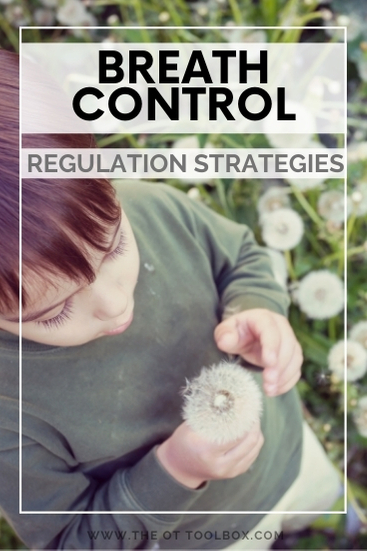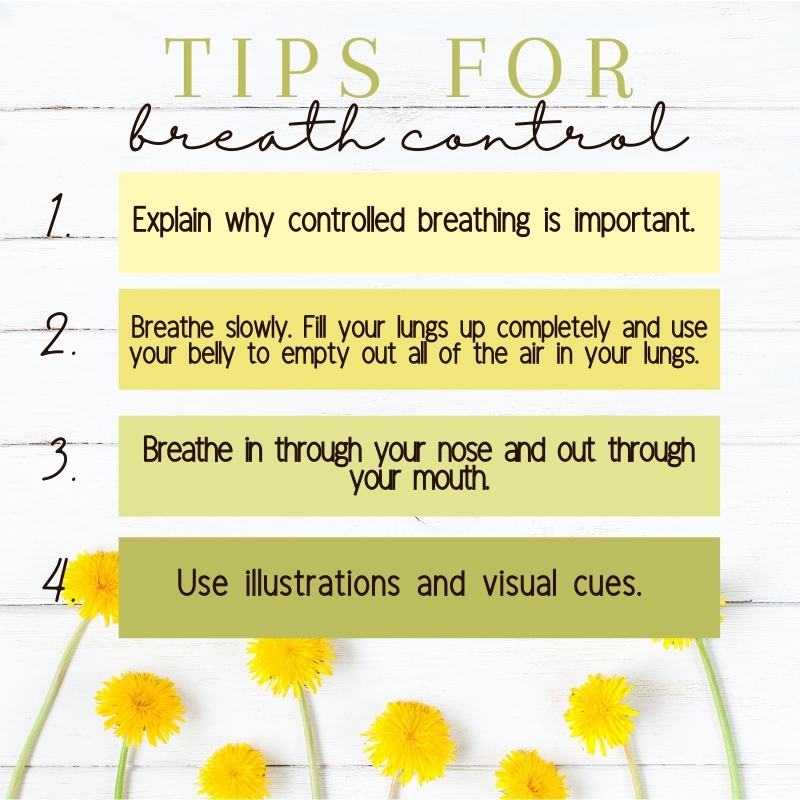In this blog post, you’ll learn about breath control as a coping tool. By consciously breathing using deep breaths and engaging the diaphragm, controlled breathing is a strategy for regulation and helping kids reach a calm and alert state so they can focus. Let’s discuss breath control and deep breathing as a tool for children!

As an occupational therapist working with children, there have been many times that I have told myself to ‘Just Breathe’. It’s always been something that has helped me to center myself and helped me to deal calmly with the situation at hand. Despite gathering a fair amount of experience over the past 20 years I found myself using this phrase more than ever before as we were all thrown into a whole new pandemic world
last year. And it helped me on a number of levels.
I started talking to the children that I work with about breathing and I started incorporating breathing exercises into our therapy sessions. This wasn’t entirely new but somehow it took on a new meaning while facing so many changes and so much uncertainty. And the kids LOVED it. What a simple effective way to help calm and focus children (and adults!) Just breathe!
What is Breath Control?
Before we explored how to breathe I chatted to my young clients about why it is important to breathe. Apart from the obvious (we need to stay alive!) we spoke about how breathing can help you feel calmer, can help you focus and concentrate and can help you prepare for a challenge or new activity.
Breath control uses conscious breathing, or an awareness of using deep breaths as a strategy for regulation. Engaging the diaphragm for full, “belly breaths” allow for controlled breathing and is helpful in allowing children to reach a calm and alert state so they can focus.
Breathing exercises have been shown to activate the parasympathetic nervous system which tones down the bodies fight or flight response to stress. In the therapy setting it is essential for clients to be in a calm-alert state in order for therapy to be effective. Deep breathing, mindful breathing , and deep breathing exercises help to achieve this state.
Breath Control for Kids
I found that clients from the age of five years were able to engage in these conversations about breathing and feeling calm. Therapists, teachers and parents can use this as an opportunity to connect with children and can use breathing exercises to begin to understand how to help children with self-regulation. Read more about additional information on the benefits of breathing in children. For research on the benefits of deep breathing as a self-regulation strategy, check out this Clover Deep Breathing Activity.
How to improve breath control
Once we had covered the importance of breathing we started to look at how we should breathe if we wanted to reap the benefits of this self-regulation tool.
The challenge was to encourage children to slow down when they engaged in this activity! Not an easy task when the majority of my caseload are little bundles of energy who do things at 100 miles an hour.
But we worked on it and practiced together discovering that it was really important to to fill your lungs up when you breathe in and empty them out when you breathe out.
We also practiced breathing in through our nose and out through our mouth.
Breath Control Analogies
It was helpful to give few different analogies and use illustrations while we were developing our breathing technique. Try these strategies for breath control:
Breathe like you are inflating and deflating balloons.
Breathe like you are smelling flowers and blowing dandelions.
Breathe like you are buzzing bees.
Try Take Five Breathing and use your hand as a prompt take five deep breaths.
Pumpkin Deep Breathing Activity
Clover Deep Breathing Exercise
Snowman Deep Breathing Activity
Penguin Deep Breathing Exercise
Polar Bear Deep Breathing Exercise
Each child seemed to find technique that they were comfortable with and breathing exercises became one of warm up activities at the beginning of each session.
We added this to our breathing exercises toolbox and the box continues to grow as the children make up their own breathing activities or as I come across more breathing resources online.
Breath Control Anywhere
The beauty of breathing exercises is that you can breathe anywhere! No special equipment or apparatus needed.
With practice and encouragement children can incorporate these simple exercises into their everyday lives e.g. before they do homework, before an event they perceive as stressful, before bedtime.
As adults we can model the use of breathing exercises and reap the rewards from them as well.

Tips for Breath Control
Use these tips to teach breath control to help with controlled breathing, full breath intake, and diaphragmic breathing.
- Explain why controlled breathing is important.
- Breathe slowly.
- Fill your lungs up and empty them out.
- Breathe in through your nose and out through your mouth.
- Use illustrations and visual cues.
- Practice together and encourage children to use the breathing exercises on their own.
I know that if you make breathing exercises part of your child’s daily routine you will see improvements in their focus and attention and improvements in their ability to self-regulate. So go for it and just breathe.



